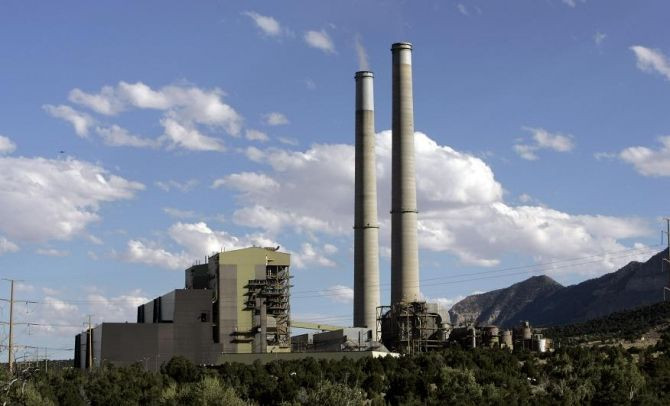After 21 Years, US Sets New Mercury Pollution Limits

In 1990, Congress passed the Clean Air Act Amendments, mandating the Environmental Protection Agency control toxic air pollutants from power plants, including mercury.
It took 21 years of negotiating with industry stakeholders and more than 900,000 public comments, but today the EPA announced the nation’s very first standards for mercury pollution from power plants.
The rule – known as the Maximum Achievable Control Technology (MACT) rule - was praised for its health benefits by the head of the EPA, a prominent health group and New York’s Mayor, among others. However a large utility association called the rule “expensive” and said the Administration underestimated the time needed to implement the changes.
The Mercury and Air Toxics Standards will manage power plant emissions of mercury and toxic air pollutants like arsenic, acid gas, nickel, selenium, and cyanide by relying on available pollution controls that are already in use at more than half of the nation’s coal-fired power plants.
The EPA estimates that the new safeguards will prevent as many as 11,000 premature deaths and 4,700 heart attacks a year.
"By cutting emissions that are linked to developmental disorders and respiratory illnesses like asthma, these standards represent a major victory for clean air and public health– and especially for the health of our children,” said EPA Administrator Lisa P. Jackson.
She said the standards “will protect millions of families and children from harmful and costly air pollution and provide the American people with health benefits that far outweigh the costs of compliance."
Mercury has been shown to harm the nervous systems of children exposed in the womb, impairing thinking, learning and early development, and other pollutants that will be reduced by the new standards can cause cancer, premature death, heart disease, and asthma.
The EPA estimates that for every dollar spent to reduce pollution from power plants, the public will see up to $9 in health benefits. The total health and economic benefits of the standards are estimated to be as much as $90 billion annually.
"Since toxic air pollution from power plants can make people sick and cut lives short, the new Mercury and Air Toxics Standards are a huge victory for public health," said Albert A. Rizzo, M.D., National Volunteer Chair of the American Lung Association, and pulmonary and critical care physician in Newark, Delaware.
He said the association expects all oil and coal-fired power plants to “act now to protect all Americans” from health risks of air pollutants.
New York City Mayor Michael Bloomberg, who has partnered with the Sierra Club to shut down the nation’s dirtiest plants, said the rules would “accelerate the country's move away from heavily polluting coal power plants to cleaner energy sources that will continue to stimulate investment and economic activity long into the future.”
The head of a utility industry group, the Edison Electric Institute, noted the EPA had made “useful technical changes from its original proposal” but said the rule would be the “most expensive” in the agency’s history.
“[W]e believe the Administration is underestimating the complexity of implementing this rule in such a short period of time, which can create reliability challenges and even higher costs to customers,” said Tom Kuhn, EEI President.
“The Administration is not using all the available authorities in the Clean Air Act to coordinate implementation, to ensure electric reliability, and to avoid excessive costs,” he said.
The standards are accompanied by a Presidential Memorandum that directs EPA to use tools provided in the Clean Air Act to implement the Mercury and Air Toxics Standards in a cost-effective manner that ensures electric reliability. The EPA is not only providing the standard three years for compliance, but also encouraging permitting authorities to make a fourth year broadly available for technology installations.
According to the EPA, manufacturing, engineering, installing and maintaining the pollution controls to meet the standards will provide employment for thousands, potentially including 46,000 short-term construction jobs and 8,000 long-term utility jobs.



























